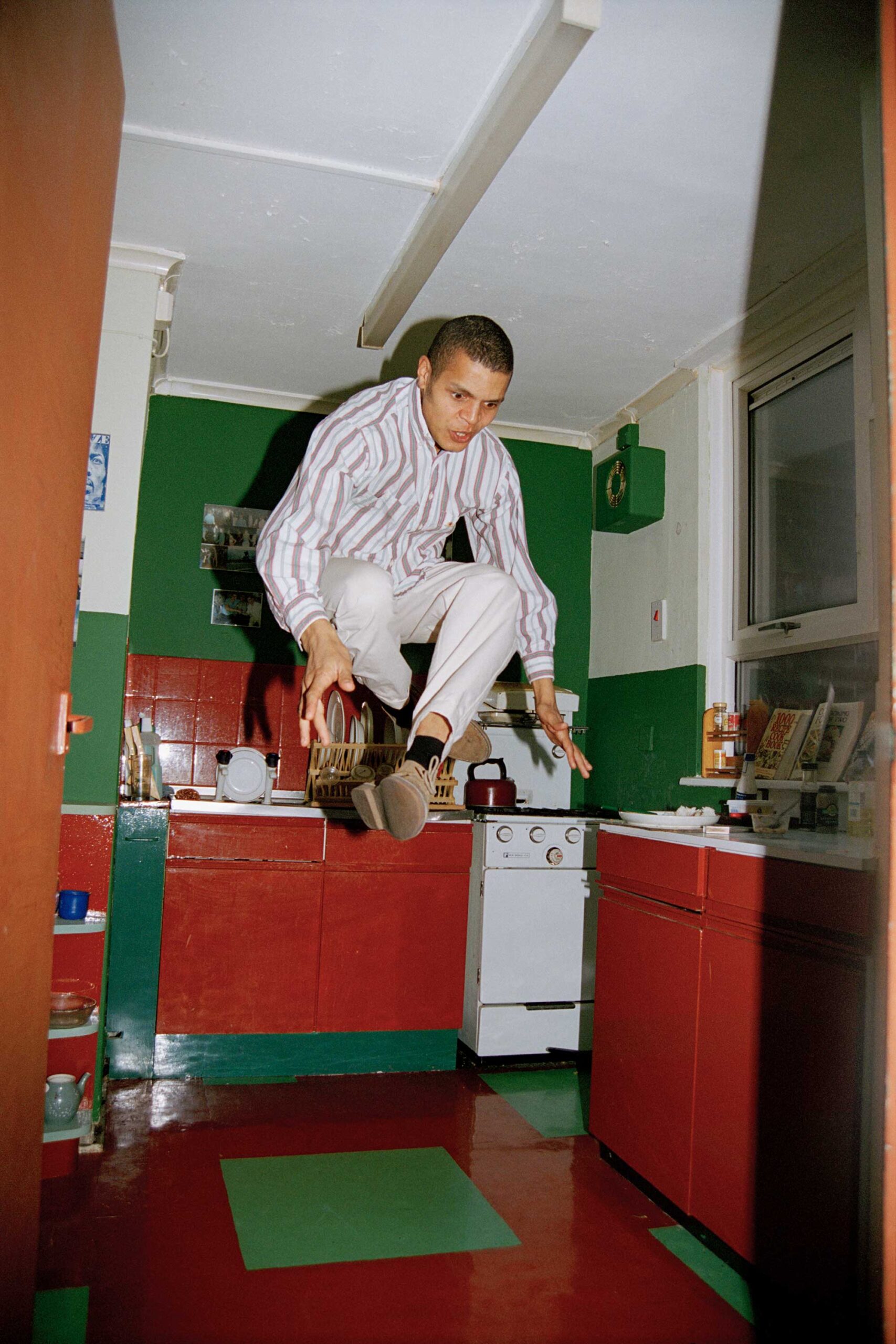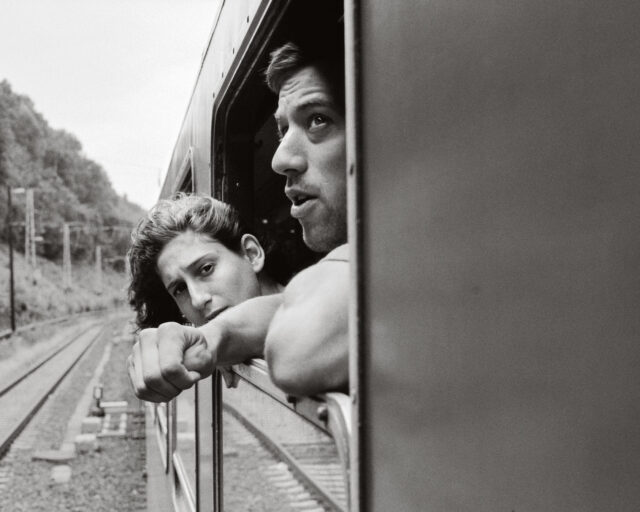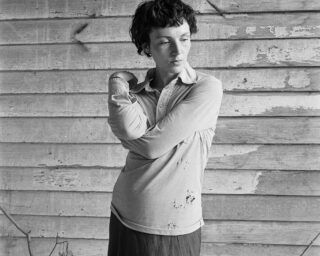Elaine Constantine, Steve in his kitchen, 1993–96
To get to Herbert Art Gallery from Coventry station, you must follow a series of pedestrian tunnels under an overpass toward the old city center, which was razed by the German Luftwaffe. What bombs didn’t flatten, postwar developers buried, sinking much of Coventry—like so many other towns in the Midlands—in a tangle of highways and footpaths incongruous with pedestrian habit. This was back in the 1950s, when the UK actually had a social welfare policy; even then, master-planning politicians and architects preferred to regard working-class life from an aerial view.
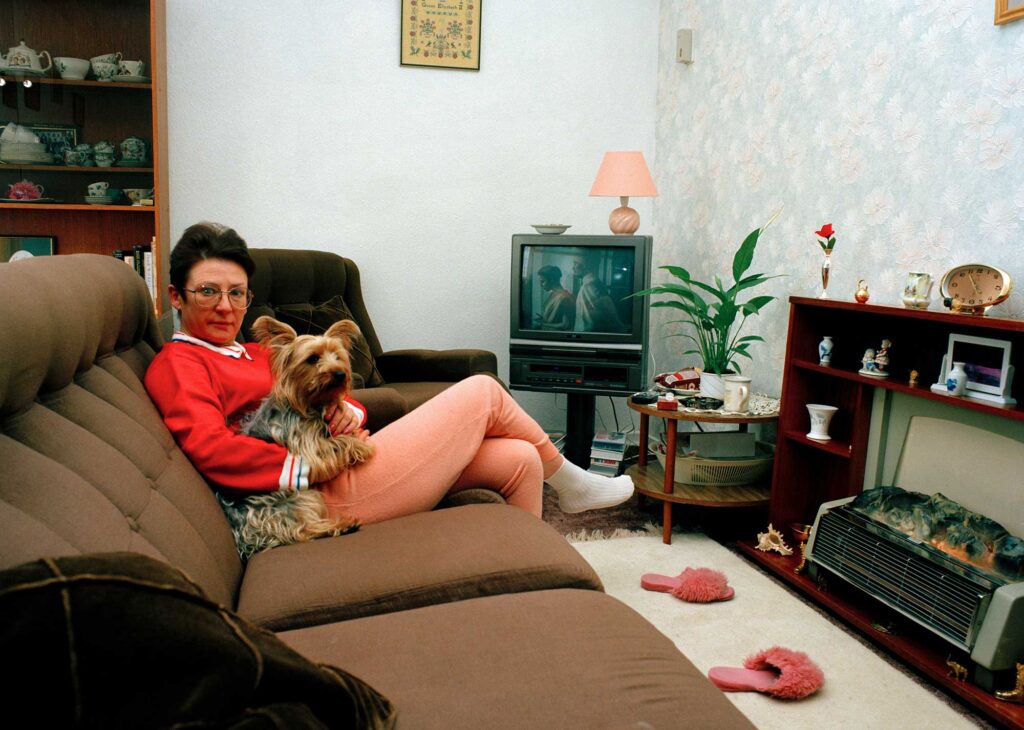
Half a century later, that postwar infrastructure has fallen into disrepair, supplemented only by a mean, bootstrapping ideology which leaves the poor to fend for themselves. Income inequality is its highest in modern British history, and the country faces a dire cost of living crisis. It’s the topic on everybody’s lips, yet when working-class solidarity is mentioned, the mind’s eye turns to black and white: marches against Margaret Thatcher, miners and Bobbies facing off in coal-dusted trenches. It’s in this context that After the End of History: British Working Class Photography 1989–2024 seeks a corrective. Thirty-five years after the fall of the Berlin Wall—a moment that might be considered “peak Thatcherism”—the exhibition asks how a younger generation of blue-collar British photographers have responded to the rising tide of neoliberalism, shifting their lens from the sociological skies to the streets.
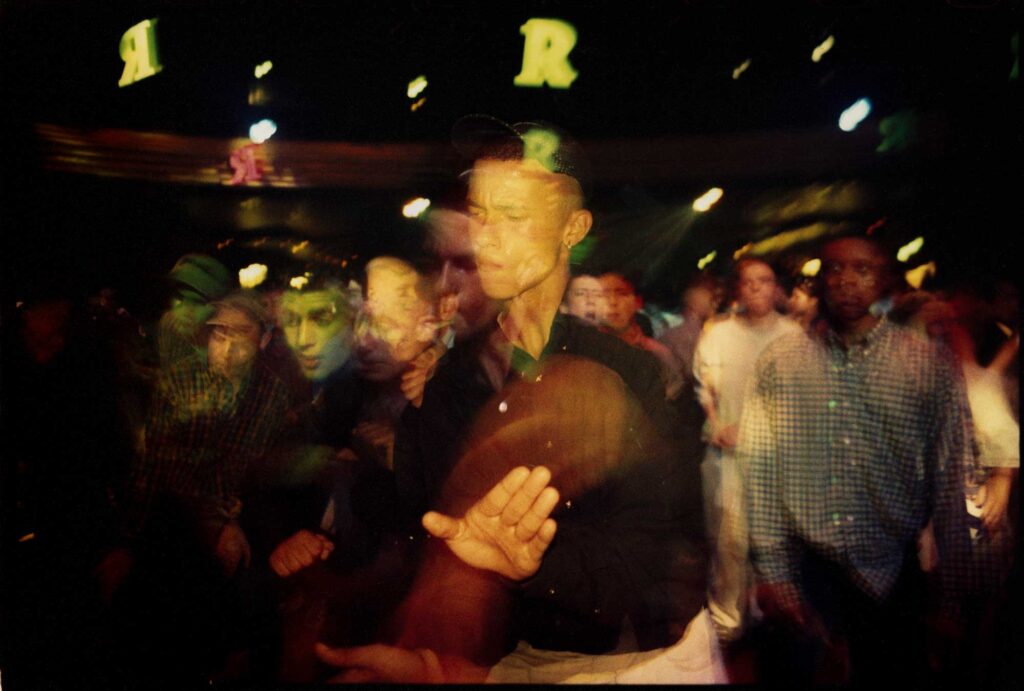
Bookending the show are photographs of the 1990s and early 2000s London jungle scene by Eddie Otchere and Ewen Spencer, respectively. Just to the right of the entrance, Otchere’s C-prints, taken with a slow shutter speed, catch young Black men on nightclub dancefloors in a fiery orange blur. Spencer’s photographs of sweat-slicked dancers and snogging couples, frozen in suspended animation, are printed on blueback paper and pasted as a panorama along the gallery’s back wall, where two lovers’ bodies, collapsing into each other against the sharp glare of Spencer’s flash, reminded me distinctly of Nan Goldin’s The Hug (1980).
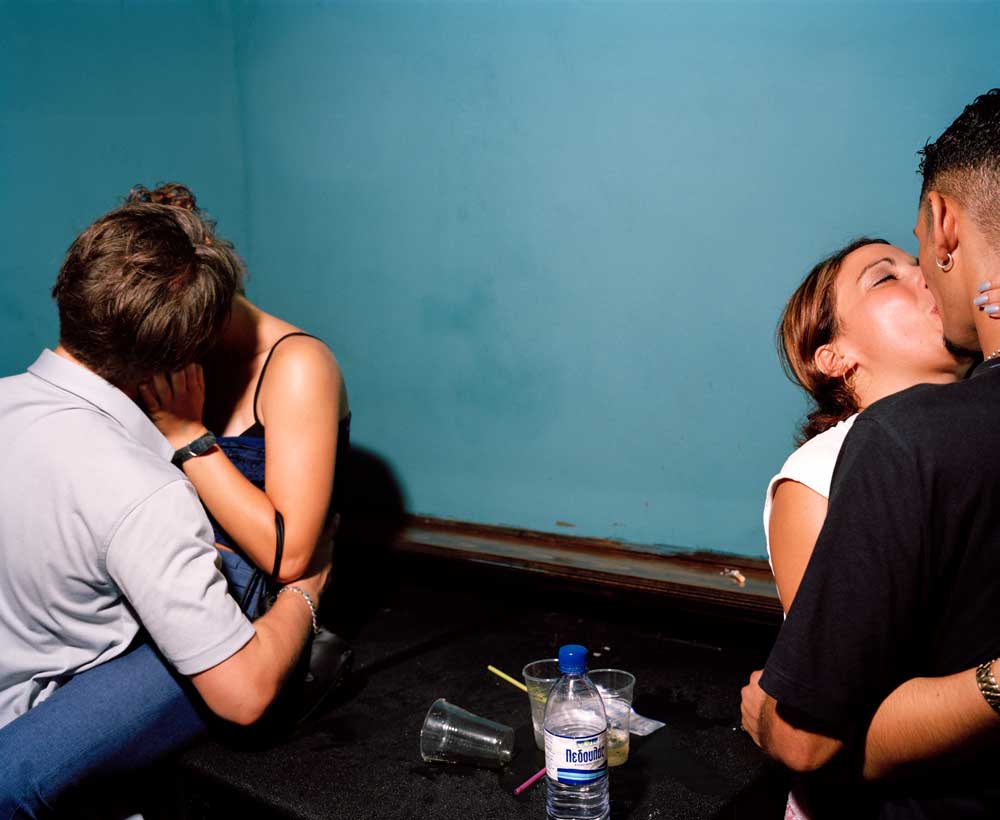
Those late days of film, before digital became dominant, seemed to produce an efflorescence of photographic production in the UK, much of it for cultish magazines like i-D and The Face, where Elaine Constantine was a regular. Her pictures from the 100 Club, a long-running London spot for Northern Soul music, are infectiously energetic but almost too sartorial; the clubbers on a parquet floor might as well be wearing Grace Wales Bonner. Other highlights get out of the boroughs and into the ’burbs, like Tom Wood’s views from inside Merseyside buses or Rob Clayton’s Estate series from the West Midlands, both shot in the early ’90s. Clayton’s richly saturated photograph of an elderly dogwalker outside the checkered tile exterior of The Phoenix Pub, M&B or a bottle of milk and sugar bowl next to an Early “Bush” Transistor Radio (both 1990–91) recall the work of William Eggleston. Curator Johny Pitts claims that these images raise “questions about the still high demand for public housing and public health crisis, and [shed] light on the neglected environment after construction,” though like Eggleston’s American still lifes and landscapes, they mostly find notes of sublimity in the mundane. The exhibition’s urgent political prerogatives notwithstanding, such analysis views these images through an unwarranted, condescending filter.

More recent contributions to the show mostly follow the same old formats to lesser effect. Serena Brown’s portraits of young women in London, dressed by the artist in knockoff designer tracksuits, fall victim to their own stiff over-staging. In Igoris Taran’s council estate landscapes, annotated with handwritten notes like “community is important,” flat images and flatter text do little to amplify a sense of depth. Then there are Rene Matic’s lusciously shot photographs of bus upholstery and shuttered discount store exteriors, in which working-class people feel eerily, conspicuously absent.


After the End of History takes its title from American political scientist Francis Fukuyama’s 1989 declaration of the triumph of the neoliberal order. With the benefit of hindsight—and thirty-five years of corporate oppression—we can say that history has not so much ended as been made to endlessly repeat its past mistakes. Call it self-immolation by design; an elite few profit while the world burns. In this sense, the exhibition contributes inadvertently to the impression that there’s been nothing new since New Labour came to power in 1997—and a malaise, now prevalent in British society, that the country has been foundering in what the late theorist Mark Fisher called an economic and cultural “cul-de-sac.” Missing are images of working-class resistance—the 2010 protests against austerity or the 2011 London riots—and practices that adopt the most popular image production and circulation technologies of our age, from phone cameras to TikTok. Such images, which surely exist in abundance, would serve as a better weathervane than photography employing means virtually unchanged since the days of social reformer Adolphe Smith (1846–1924).
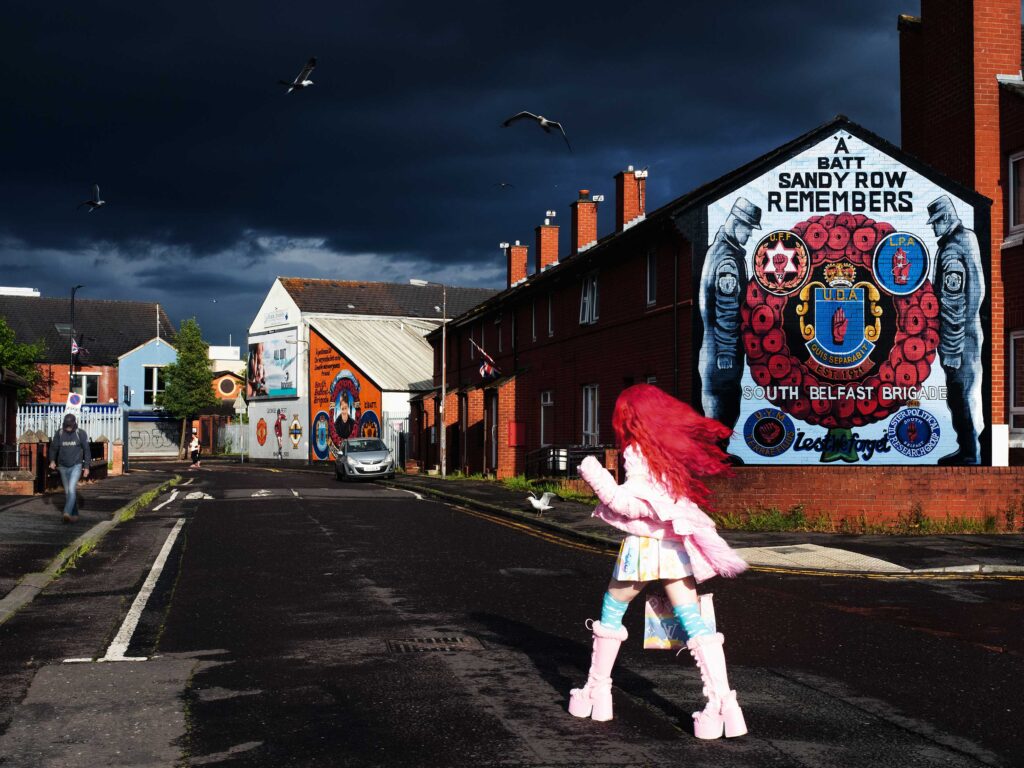
All photographs courtesy the artists
Of course, the exhibition has some notable exceptions. Sam Blackwood’s Rat Palace series of grainy risograph prints (2013–ongoing), in which detritus feels like readymade art installations (accidental or intentional, it’s difficult to tell), bring the show a welcome dose of deadpan humor: I found his orange traffic cone thrown through a plate glass window and two melted ice pops flaccid on a chain-link fence inexplicably funny. Most extraordinary of all is Hannah Starkey’s untitled photograph from a Belfast street corner in 2022. A girl with cherry-red hair and a bubblegum Harajuku costume—pink pleats, fur trim, and chunky heels—faces down the gales of a coming storm, her candy-bright look a shocking effrontery to the dark gray sky. Her Louis Vuitton monogrammed handbag feels perverse alongside a Royalist mural of red roses from the pro-Union South Ulster Brigade. Taken shortly after Brexit tossed out the Good Friday Agreement and drew a new border in the Irish Sea, the photograph invokes the recursiveness of history as a grim joke. It’s precisely this kind of view, in which local struggles meet the pressures of global capitalism like the twin fronts of a hurricane, that really takes today’s working-class temperature—and indicates which way the wind may be blowing.
After the End of History: British Working Class Photography 1989–2024 is on view at the Herbert Art Gallery, Coventry, England, through June 16, 2024.










